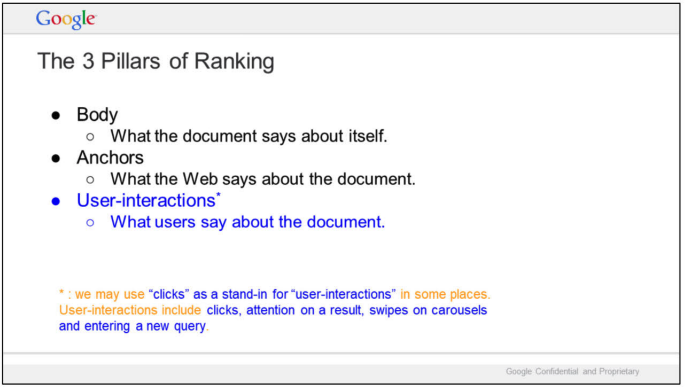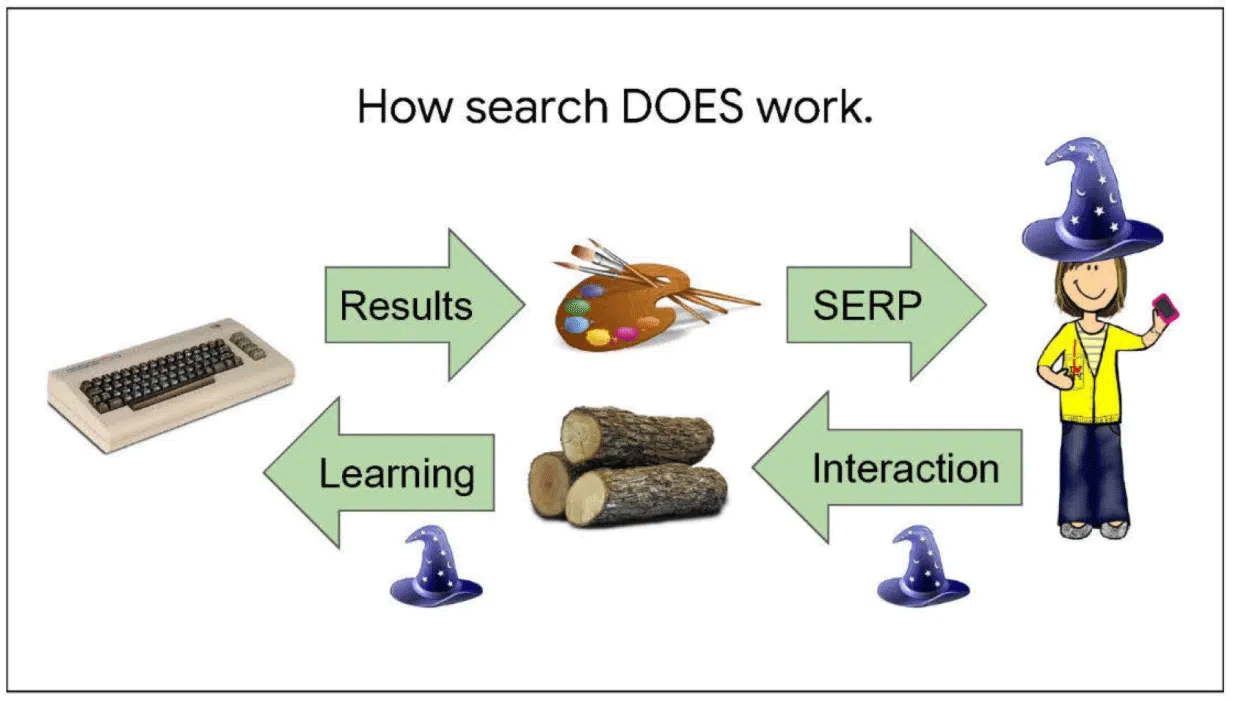SEARCHENGINES
Google Search’s 3 Pillars of Ranking Via DOJ Documents

The SEO community is buzzing about some recent U.S. Department of Justice documents released that hint at some ranking concepts at Google. One slide is named “The 3 Pillars of Ranking” and discuss body, anchors and user interactions.
The slide says The 3 Pillars of Ranking:
- Body: What the document says about itself
- Anchors: What the Web says about the document
- User-interactions: What users say about the document
Then there is this footnote that says “we may use “clicks” as a stand-in for “user-interactions” in some places. User-interactions include clicks, attention on a result, swipes on carousels and entering a new query.”

Cyrus Shepard seemed to be the first to spot these and posted a Twitter thread on them, here they are:
What user interactions does Google measure?
• Attention (hover/mouse movement)
• Clicks
• Scrolls
• Enters new query2/5 🧵 pic.twitter.com/tEiLmshBex
— Cyrus SEO (@CyrusShepard) November 2, 2023
This isn’t “personalization” – as public Google comments seem to want us to believe
“If you search right now, you’ll benefit from the billions of past user reactions we’ve recorded”
4/5 🧵 pic.twitter.com/jsnAfzMF8D
— Cyrus SEO (@CyrusShepard) November 2, 2023
CAVEATS
1) These documents are from 2016. Advancements have undoubtedly made Google less reliant on user data. But no doubt they still use it
2) Google successfully redacted much of the documents. Lots they don’t want us to seehttps://t.co/XIc3SngDng
5/5 🧵
— Cyrus SEO (@CyrusShepard) November 2, 2023
Danny Goodwin dove in a bit more and published a story named 7 must-see Google Search ranking documents in antitrust trial exhibits on Search Engine Land.
A lot of folks are using this as evidence that Google uses click data directly in its search ranking algorithm. Technically, this doesn’t prove that, it just says that Google does use it for feedback on how well the algorithms are working. In this slide Goodwin pulled out, it shows how Google shows results in the search results, then takes the interaction back to learn from it. Is that learning real-time in that the algorithm immediately changes the results based on click data? Seems not. But that learning does influence future ranking and algorithmic changes. Maybe I am wrong, I am wrong a lot.

“The association between observed user behavior and search result quality is tenuous. We need lots of traffic to draw conclusions, and individual examples are difficult to interpret”
— Barry Schwartz (@rustybrick) November 3, 2023
One document that Goodwin showed me also is this email chain internally within the search team about how they are focused on making sure the ad team does not influence the free/organic listings. Danny Sullivan, Paul Haahr and Pandu Nayak, and others are all in this chain. It doesn’t talk about rankings but it did make me feel like Google’s search team is focused on keeping ad influence out of the organic results.
Forum discussion at X.

















